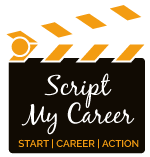 Resume is your gate-opener for an interview. It is the first step that defines your career story. People often believe resume to be a formal document which tells the interviewer about our basic credentials like educational qualification and work experience. We concentrate on facts so much that we lose to bring up the career story in the resume. Resume presented in the form of a story will appeal better as human beings are more attuned to read stories than just facts and figures.
Resume is your gate-opener for an interview. It is the first step that defines your career story. People often believe resume to be a formal document which tells the interviewer about our basic credentials like educational qualification and work experience. We concentrate on facts so much that we lose to bring up the career story in the resume. Resume presented in the form of a story will appeal better as human beings are more attuned to read stories than just facts and figures.
You are the hero of your story. As the protagonist, you decide the direction of your story through wise choices. And resume is the document that captures those choices. Story has different elements, and a career story works in the same way.
There are 5 story elements which you can add in your resume to express your career story with more clarity.
- Character/Protagonist: As you are the hero of your story, resume should talk about you, beyond the work you have done. Your job defines some part of your character but not your whole character. Resume should tell how you stand out from your peers. It could be through your passion, your work for society or anything that brings out your personality. For example, a CFO in a company has a passion for running marathon. This shows the protagonist as a strong and determined person who is eager to take up any challenge. Identify some characteristics that defines you and your character and be bold to present it in resume in a subtle manner
- Conflict: If you are watching a movie and it is going smooth without an angle of character’s struggle or challenges then it will get boring pretty soon. Similarly, in real life, a person encounters many challenges in his life but often forgets to present it. When you are capturing an achievement, you can give the context and premise to help the reader understand the challenging circumstances that you have been and how you succeeded. For example, if you have taken up a leadership role in a start-up leaving the comfort zone in an established organization, that showcases your risk-taking attitude and abilities.
- Plot: It is the most important part of any story. It shows what the story is trying to tell. It is the plot of the story that attracts us the most to listen to it. In career story context, it shows what you are bringing on to the table. It is the blend of domain expertise plus functional skills and personal qualities. Domain expertise refers to in which domain you are working, like it’s an insurance sector, health sector and then what functional skills you are applying in your job. Along with them, you can add relevant personal qualities you possess in a subtle manner. A good resume should effectively convey your plot.
- Setting: Whenever you listen to a story, you demand certain credibility whether the story is true or not. It can only be proven when character provides specific details by quoting place and time. Similarly in resume, you should properly mention in which companies you have worked, for how long, mentioning starting and ending date which gives an employer proper clarity of your career journey.
- Theme: Every story has a theme, so does yours. Define yourself explicitly whether you are leader with great track record, a product evangelist, BA who is in love with technology or a specialist. The objective statement of your resume is a great place to write about yourself and tell the employer what you are looking for. It not only gives clarity to employer but to you as well, defining your career story and direction more explicitly.
These are the major story elements that you need to keep in mind while making your resume. Now the question comes, what is the process of building a resume. Following are four steps which you can follow to build an appealing resume.
Clarity: It is the foremost basic step before taking any action. You need to have clarity on what you are looking for, which kind of job, in which domain and what you can bring on to the table.
ScriptMyCareer uses a tool named ‘Career Journey Planner’ which is a questionnaire having deep thinking questions which helps you to dive into your inner mind and gain clarity on your career journey. You can use this tool free of cost and gain your clarity.
Journey: Next step is to write down your whole career journey in a presentable form. This includes your achievements, key events and learnings from each stint. Don’t try to cram up everything as no one likes stretched and long stories. Pick and choose what needs to be highlighted, according to the role you are targeting
Template: The layout and template of your resume is the one which makes the employer read what you have written. An attractive resume which is easy to read would grab more attention than a basic black & white resume with long paragraphs.
Feedback: Last step is sending your resume to your confidants and getting their feedback. You can ask them questions like, “Did it show my career journey? Was the template appealing enough?”
Getting a genuine feedback could help you to make your resume better. You can also mail us your resume at accelerate@scriptmycareer.com and get your resume critique report at free of cost.
Therefore, keeping in mind all the story elements and following the process of resume building, you can effectively tell your story through resume. Trick is to stick to the formal tone of the resume but still capture the career story.
If you still need some guidance and require some handholding in building a good resume, we are here to help you. Check out our service ‘Comprehensive Resume Builder’ and get in touch at accelerate@scriptmycareer.com.






